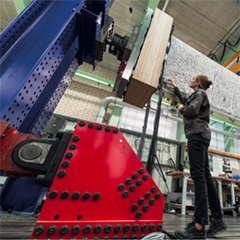Abstract: The continuing increase in rotor diameters is pushing the structural load-carrying capabilities of turbine blades to the limit. In order to ensure reliability and structural integrity, representative testing and validation methods are now more important than ever before.
Development in wind turbine blades
Wind turbine manufacturers are continuing to increase rotor diameters with the aim of boosting annual energy production (AEP). Due to the high installation costs per turbine, this is especially true for offshore blades, but onshore turbines are also increasing in size, as multi-megawatt turbines are being developed for lower wind speeds.
Direct scaling of blade dimensions would result in a cubic relationship between blade mass and blade length. However, this is certainly too conservative for some areas of the blade, for example the skin panels, which need to scale with the blade surface area. Thus, a theoretical scaling exponent below three is expected. In the past, this ‘square-cube law’ has repeatedly been beaten due to both design and material innovations, and scaling factors between 2.2 and 2.4 have been reported. This illustrates how structural load carrying capabilities are pushed to the limits.
Put simply, mechanical loads on wind turbine blades can be categorized into flapwise loads, which are caused directly by the wind, and edgewise loads, which originate from the generated torque and the gravitational loads.




























